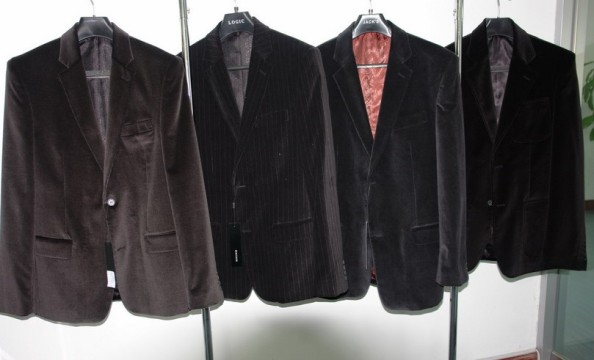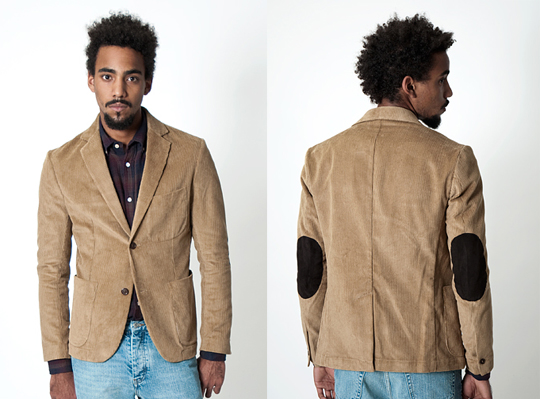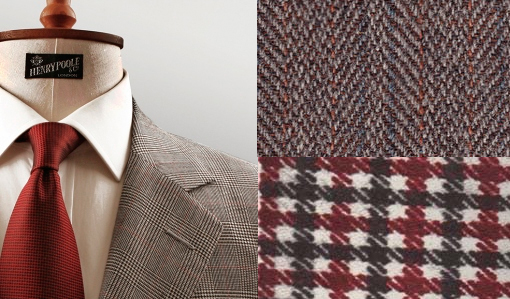Know Your Fabrics: Flannel, Velvet, Corduroy and Tweed
Whenever style junkies like myself write about what makes a damn good suit, we often take for granted that many of you out there might not really know about the variety of fabrics and textures out there that could help you make that perfect 2 or 3 piece suit. Here’s the remedy and the inaugural Monsieur’s style explainer covering the key materials you should be aware of- flannel, velvet, corduroy and tweed.
1. Flannel
Whether it’s Gregory Peck in 1956’s The Man in the Gray Flannel Suit or Sean “Bond, James Bond” Connery in Thunderball, the flannel suit is de rigeur for serious gentlemen (or Monsieurs) on serious business. Derived from ye olde English flaunneol, flannel is essentially woven worsted wool dragged repeatedly through hot water and across rollers until the texture of the fabric develops a polished seen and felted appearance. Not commonly found off the rack, flannel is not the most popular suit fabrics because the heavier material while perfect for winters also make it ill suited for almost every other season (Flannel traps body heat). Thankfully, flannel today is much lighter than what they had in the 50s and the good folks from Ralph Lauren usually use fox flannel from the Fox Brothers.
2. Velvet
From the Latin villus roughly translated to “shaggy hair”, velvet has been the one constant fabric that has shared association with royalty and by extension, luxury. Good velvet is soft and comes with a light reflecting gleam. Sadly, most gentlemen today often cannot tell more widespread materials like velvet, velour and velveteen apart.
Rules of Velvet: 1. Wear only past 6 pm. 2. Whilst lush and immensely soft (thus “shaggy”), you must not let anyone particularly other men touch your velvet or touch another’s even if you’ve been asked to. Women excepted. 3. Acceptable colours include: black, midnight, olive green, brown and red. 4. Never wear velvet on velvet.
3. Corduroy
The vertical “stripes” are called wales (I didn’t know that either, thanks Wikipedia). Derived from the Anglo-Saxon walu, corduroy is a material “marked with stripes” and named thusly; thickness often determines if cords can be worn as a blazer or as trousers. At 16 wales (fine, stripes), Pinwale corduroy is great for suits.
Rules of Corduroy: 1. The thicker the wales (stripes) the more casual it is. 2. Thick man? Go with thin wales. 3. Always match them with shirts or cardigans. 4. Wear them anywhere except the office.
4. Tweed
In Scottish Gaelic, it was known as “the big cloth”, tweed is formed by many weaves of different patterned wool providing it’s tweed wearing hunter gent with a form of camouflage. In today’s urban jungle, tweed is more likely to make one stand out. Perfect for Monsieur’s who don’t want to blend in. Always go for Harris Tweed, the top brands do.
Rules of Tweed: 1. I find a full tweed suit kind of daggy (unless it’s herringbone). A sport blazer will suffice. 2. The more complicated the pattern, the less likely you are able to use it in many sartorial combinations. 3. Tweed was made for hunters, your shoes should be equally outdoorsy 4. Popular tweed options: glen-plaid, broken-check and district-check.




Morty62
October 7, 2011
Ummm…that top-right pic is herringbone.
Lord Shogun
September 1, 2012
Really dude?? You don’t know what corduroy wale is yet have pretensions of expertise in fashion?? Who doesn’t know what a corduroy “wale” is? You suck at this.